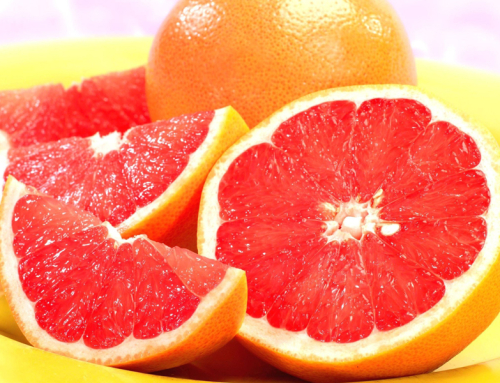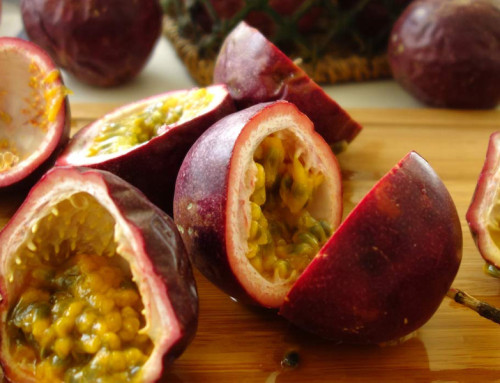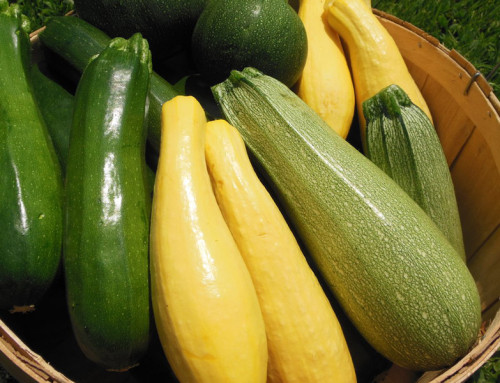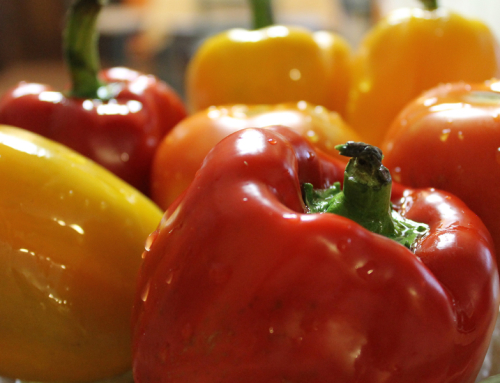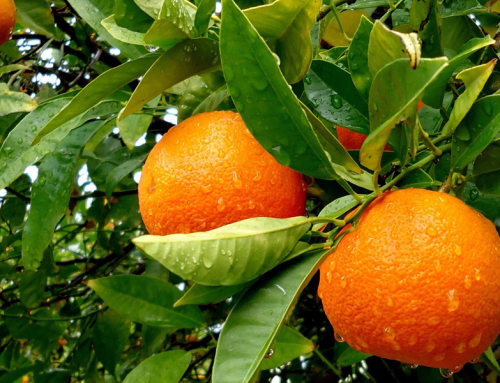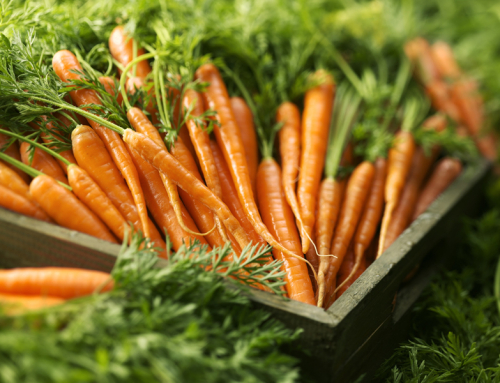- 1 Medium (207 g) = 130 calories
- 1 oz (28 grams) = 18 calories
- 100 grams = 65 calories
- 1 cup peeled and sliced (165 g) = 107 calories
- Mango skin = not available
- Mango kernel = not available
- 1 Tbsp mango butter (from the kernel) = 40 calories
For dehydrated mango, the drying process increases the sugar concentration by decreasing the water content, but the calories remain the same.
- Raw mangoes and mango juice are helpful in getting rid of unnecessary body heat because they prevent the loss of salts and iron from the body. and they are also useful in eliminating body odors, if you don’t mind smelling like a mango.
- Mangoes are an exceptional source of nutrition due to high amounts of fiber and carbohydrates as well as high levels of vitamins and minerals. Fiber is an important form of carbohydrate. Diabetics subtract the amount of fiber grams to get the true carbohydrate count for their diets. Foods that are high in fiber, like mangoes are, provide better satiety, or food satisfaction than juice.
- A 165 gram serving of mango contains the following amount of the recommended daily allowance of the antioxidants of vitamin A (25%), vitamin C (76%) and vitamin E (9%). Vitamin C is effective in one of the mango’s well-known properties of soothing fever, helps the absorption of iron and can inhibit the production of natrosamin, a substance triggers cancer, while vitamin A is important in healthy eyesight.
- A 165 gram serving of mango contains 11% of the recommended daily allowance of Vitamin B6 or pyridoxine, along with high levels of additional B-complex vitamins.
- A 165 gram serving of mango contains 9% of the recommended daily allowance of vitamin K.
- A 100 gram serving of mango contains an abundant of potassium, 156 mg to189 mg.but only 2 mg of sodium. Potassium is an important element in cell and body fluids that helps to regulate heart rate and blood pressure. Adding a high-potassium fruit daily can reduce fatal stroke risk by as much as 40%.
- Mangoes contain moderate amounts of copper, which is a co-factor for many vital enzymes and is required for the production of red blood cells.
- Mangoes also contain 17 amino acids and are nearly a complete protein in themselves. They just need a few more amino acids to be eaten with them to create a complete protein.
- Mangoes have a low glycemic index of 5 per 100 g serving.
- Antioxidants that are present in both the mango peel and pulp include several carotenoids and polyphenols, including quercetin, kaempferol, gallic acid, caffeic acid, catechins. Flavonoids, like quercetin, can inhibit the enzymes that are involved in breaking down complex carbohydrates into simple sugars.
- Gallic acid is present in substantial quantity and the Manila mango has significantly higher levels of both gallic acid and total phenolic content than any other mango cultivar. Gallic acid has been shown to inhibit growth of prostate cancer cells. It also has anti-inflammatory and anti-fungal properties, and may be of use in diabetes treatment because of its ability to trigger the release of insulin by the pancreatic cells.
- Mangoes contain tannins, which have anti-inflammatory, antiseptic, and astringent properties, and are used for diarrhea, irritable bowel syndrome, and skin conditions. They are ubiquitous in plants and are found in common foods such as black tea, green tea, and cranberries.
- Both the mango peel and pulp contain additional phytonutrients such as carotenoids, polyphenols and omega-3 and omega- 6 polyunsaturated fatty acids.
- At least 25 different types of carotenoids have been identified and isolated from the mango pulp. Among these 25 varieties, beta-carotene had the highest concentration and is responsible for the yellow color of the mature fruit.
- Mangoes contain mangiferin, a compound that is associated with antimicrobial and antioxidant activities as well as being gastro-protective and having anti-diabetic effects in rodents.
- Mangoes contain xanthones that are antioxidants that may interfere with normal blood-clotting and may interact with blood-thinning medication such as warfarin that could possibly lead to bleeding. High amounts of xanthones may cause sedation and possibly excess sedation when combined with other herbs or medication and are believed to be one of the active ingredients in the herbal anti-depressant known as St. John’s wort. They may also be toxic at higher doses. However, using moderation when eating mango fruit should have no adverse effects.
- Other antioxidants, triterpenes, also known as Fagarsterol, (precursors to steroids) which include Lupeol, act as excellent anti-inflammatory and preventative compounds against prostate and skin cancers in laboratory tests. Lupeol, also an anti-inflammatory compound, at effective therapeutic doses, exhibits no toxicity to normal cells and tissue, but does seem to target specific molecular pathways.
- According to natural food aficionados, mango fruit is excellent for detoxing and cleansing the blood, and acts as an antiseptic to the body disinfecting it of microbes.
Generally, it is the small round reddish-blush mango that is most often seen in US stores. They may be either Kents, Tommy Atkins or Haden mangoes, as they are difficult to distinguish from one another and few stores actually label the variety unless they are organically grown.
There are also smaller, long, slender, sort of flattened, oval-shaped Manila mangoes that are also called Ataulfo, Champagne, Adaulfo or Adolfo. These have a smooth, firm flesh with no fibers and is a bit creamy in texture. They range from green (bitter) to vibrant yellow (very sweet) when ripe.
And the monstrous-sized yellow Haitian mangoes that are as long as a dollar bill are even rarer to find as there appears to be only one natural foods company that imports them.
For example, while not present in the fruit, a compound known as vimang has been extracted from the branch bark of mango trees that contains various polyphenols with antioxidant properties. Polyphenols, which are phytonutrients, can help prevent spikes in blood sugar, and aids in regulating it. They have been shown to lessen the absorption of glucose from the digestive tract; to stimulate the pancreas to secrete insulin; and to increase the uptake of glucose from the blood and are of particular benefit to the “elderly person’s blood limitations” according to Cuban researchers. This points to the importance of the mango tree itself.
Even the young, immature mango leaves are cooked and eaten in Indonesia and the Philippines.
Mango Itch
Even more interesting is the fact that the edible mango is classified in the same plant family as the poisonous sumac, and the mango’s peel contains a substance called urushiol. This is what causes itching and skin rashes that some people experience when there skin is exposed to poison ivy, poison oak, pink peppercorns, cashew shell oil, mango skin or mango sap.. It is also referred to as urushiol-stimulated contact dermatitis. It can occur when handling freshly picked fruit that have sap dripping from the stem end. This sappy juice can get on hands and on the skin of the fruit, and if not washed off well, can be spread to other parts of the body for up to three days, and even to furniture and pet fur if hands are not washed well after handling a mango.. Usually, symptoms occur several hours after the exposure, then build to a peak within two to five days, and take about three weeks to clear up. However, mango flesh has only a tiny amount of urushiol, so most sensitive people can eat the fruit if someone else peels it.
Mango Peel
People often peel mangoes, and edible peel is normally discarded, but they are removing a lot of the health benefits by doing so. They believe the skin has pesticides on it, which may or may not be true. But the peel is rich in antioxidants and is an effective antioxidant food resource. It weighs 20 to 25% of the total weight of the fruit and is an important source of of the fat-soluble fiber, pectin. which can significantly lower many of our blood fats. One dried mango peel contains an average of 13% pectin. Washing your mangoes before eating is always a good idea, to remove any potential pesticide residue and buying organic mangoes is even safer, so eat the peel. It is meant to be eaten with the mango, just like you eat the casing with the sausage.
Generally, mangoes are easily sliced by cutting along the seed stone and then freeing the stone by twisting the two halves in opposite directions. But some mangoes have so much fiber that they cannot be sliced. These have to be massaged a bit before cutting off the stem end and squeezing the juice into the mouth.
Mango Seeds
The edible mango seed or stone that is inside weighs 13% of the fruit’s total weight, and is about 55 to 65 % of the total seed’s weight.
Mango kernels are significant food source and are dried and stored for use as meals among the poor and during famines. The kernels are soaked to remove the astringent tannins, then dried and pounded into powder, and mixed with other flours to prepare bread or pudding. They are also eaten roasted or boiled.
Significant amounts of the solid white edible fat can be extracted from the kernel and used as a recommended healthier substitute for cocoa butter in chocolate.


